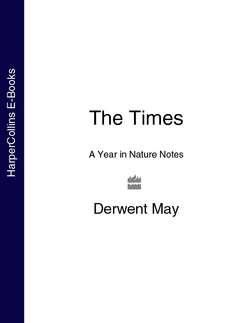Читать книгу The Times A Year in Nature Notes - Derwent May - Страница 21
16th January
ОглавлениеSNOWDROPS ARE IN flower under the trees at the edge of damp lawns, and their leaves are coming up everywhere in woods. The pure white bells nod daintily on the green stalks; if you lift their heads and look inside, you see green, crescent-shaped blotches. They have a strong, sweet scent. The flat, grey-green leaves continue to grow after the flowers have opened. In some woods, especially in warm places such as the Inner Hebrides, they will soon be covering the whole woodland floor like a fall of snow. On valley sides, they can look like flowing white streams. They are members of the daffodil family.
A new voice in the woods in late January is that of the stock dove, whose song is a soft, rumbling ‘woo, woot’ that is easily overlooked. The bird too is elusive, since it is much shyer than the wood pigeon. It is a blue-grey dove, with a green sheen on its neck, and without the conspicuous white wing-bars and white neck-mark of the wood pigeon. Instead, it has a noticeable dark edge to its wings. Stock doves suffered badly from eating chemical seed dressings in the 1950s, but their numbers have since recovered.
There has been a considerable influx of waxwings from Scandinavia. These striking pink birds, with a crest like a quiff and red and yellow marks on their wings, feed on the decaying berries in hawthorn hedges, and on cotoneaster berries in places like supermarket car parks and roundabouts. At present they are steadily moving inland from the east coast.
